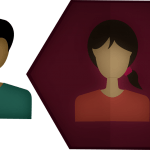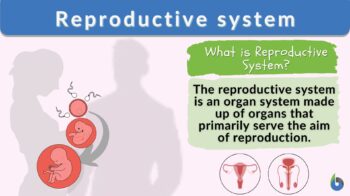
Reproductive system
n., plural: reproductive systems
[ˌriːprəˈdʌktɪv ˈsɪstəm]
Definition: a biological system primarily for reproduction
Table of Contents
What is the Reproductive System?
The reproductive system of an organism is the biological system made up of all the anatomical organs involved in reproduction. The reproductive systems are vital for the production of offspring, and therefore, ensure the continuity of the species.
In organisms that reproduce by sexual reproduction, the reproductive system, which may also be referred to as the genital system, is where sexual intercourse takes place. The sexes of distinct species frequently differ significantly from one another, unlike other organ systems. Due to these variations, two people’s genetic material can be combined, potentially resulting in children with higher genetic fitness.
Biology definition:
The reproductive system is an organ system that functions primarily for the purpose of reproduction. In humans and other vertebrates, for instance, the reproductive system is comprised of sex organs, which may be male ( including the testes, vas deferens, seminal vesicles, prostate, and penis) or female sex organs (including the ovaries, fallopian tubes, uterus or womb, vagina or birth canal, and mammary glands). The reproductive system’s main purposes are reproduction and gamete production (in males, sperm cells, and in females, ova or egg cells).
Other human organ systems are integumentary system, lymphatic system, muscular system, nervous system, urinary system, respiratory system, skeletal system, and immune system.
Synonym: genital system
Animals
The primary reproductive organs in animals are the external genitalia as well as a variety of internal structures, such as the gonads, which produce gametes. Human reproductive system illnesses, particularly infectious sexually transmitted diseases, are exceedingly prevalent and ubiquitous.
Similar gonads, ducts, and apertures make up the reproductive systems of the majority of other vertebrates. These are the main parts of the reproductive system. Every group of vertebrates, however, exhibits a wide range of physical adaptations and reproductive methods.
Vertebrates
Major components of the reproductive systems of vertebrates are similar. They all have gonads, which are organs that produce gametes. These gonads in females are then joined by oviducts to a pore, usually the cloaca, but occasionally to a different hole like a vagina or intromittent organ.
Humans
Typically, sexual contact results in internal fertilization of the human reproductive system. To fertilize the ovum, the sperm subsequently passes via the vagina and cervix and into the uterus or fallopian tubes.
Following successful fertilization and implantation, the fetus grows inside the female’s uterus for around nine months. In humans, this process is referred to as pregnancy. Childbirth, which occurs after labor, marks the end of pregnancy when the child is born from the vagina – a muscular canal. The cervix dilates, the uterine muscles contract, and the baby emerges from the vagina during labor.
The female reproductive system has two kinds of purposes: first, it produces egg cells, and second, it nurtures and protects the embryo until it is born. The production and deposit of sperm cells is the sole purpose of the male reproductive system. The degree of sexual differentiation in humans is high.
Most people have many differences that generally arise in secondary sexual traits in addition to variations in almost every male and female reproductive organ. Many sex hormones influence the way the male and female reproductive systems work. The human sex cells are the egg (female) and the sperm (male).
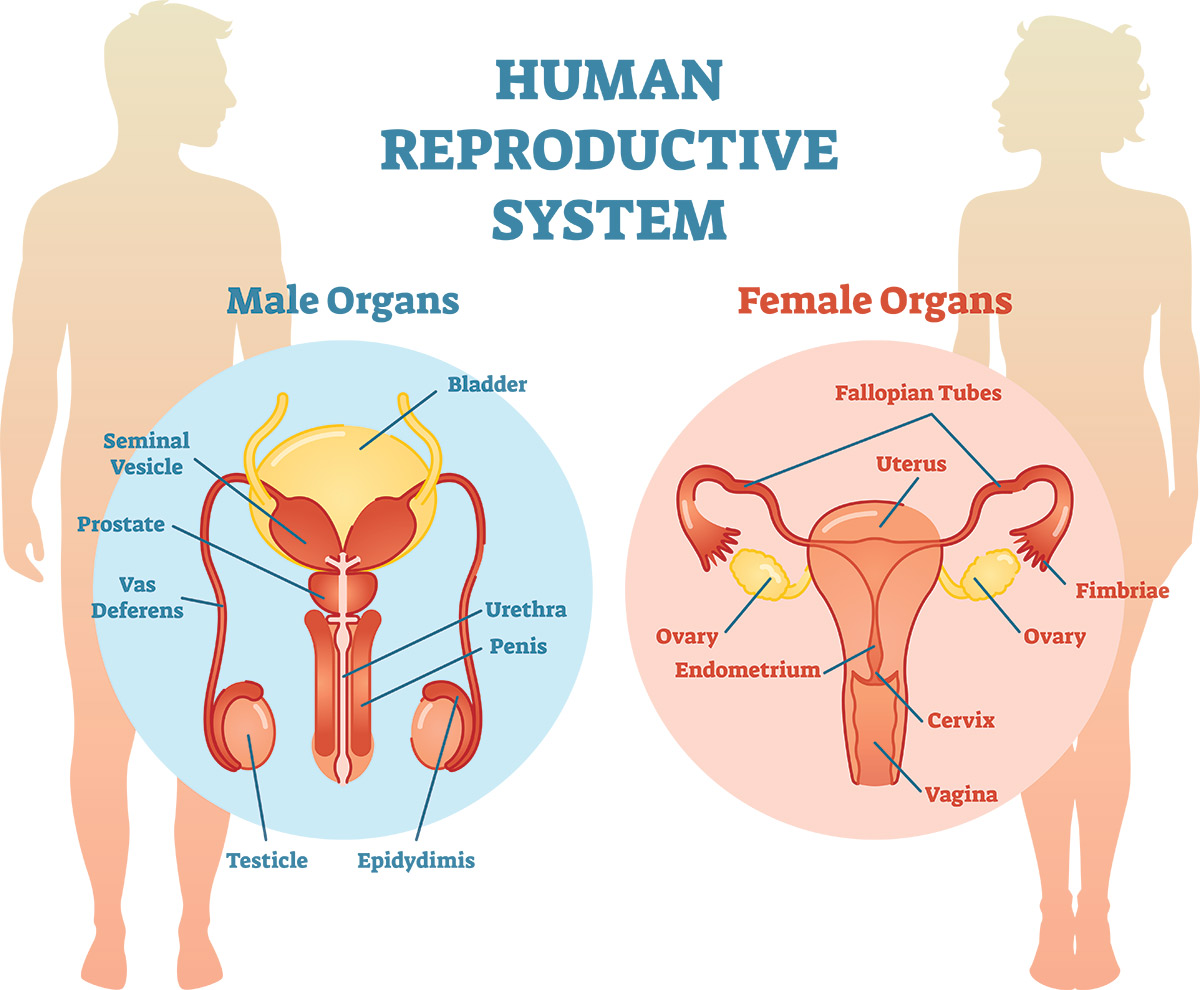
Male
A male reproductive system is a group of organs that are external to a man’s body and are situated near his pelvis and are involved in reproduction. The male reproductive system’s main direct job is to produce sperm for the ovum to be fertilized.
However, sometimes sperm do not make it to the ovum. Even healthy sperm can fail to survive the competition or may have been lost inside the cervix or stay in the cervical crypts.
Physically, the male reproductive system has two parts: the upper being the penis itself and the lower part being the testicles. However, categories can be used to classify the male’s primary reproductive organs in their entirety.
Production and storage of sperm fall under the first category. Immature sperm then migrate to the epididymis for development and storage after being produced in the testes that are housed in the scrotum, which, in turn, regulates body temperature.
The structures such as the seminal vesicles, prostate gland, and vas deferens are among the glands that produce ejaculatory fluid in the second category.
Spermatogenesis takes place in the seminiferous tubules, where Sertoli cells and germ cells interact closely as spermatozoa mature. The urethra in the male reproductive system carries pee and sperm outside of the body.
Male sex hormones regulate sperm development and how males physically develop, including the growth of facial hair and a deep voice. The main sex hormone in men is testosterone.
Watch this vid about the male reproductive system:
Female
A combination of reproductive organs that are normally located inside a woman’s body and in and around her pelvic region make up the female reproductive system in humans.
The vulva, which connects to the vagina, the vaginal opening, and the uterus (shaped like an upside-down pear), which houses the growing fetus, and the ovaries, which create the female’s ova, make up the three primary components of the female reproductive system.
The vulva, which also houses the labia, clitoris, and urethra, is where the vagina meets the outside of the body. During sexual activity, mucus secreted by the Bartholin’s glands lubricates this area.
The pituitary gland releases a hormone that causes some ova to develop and expand once every 28 days or so. This is the length of the average menstrual cycle.
One ovum is released, and it enters the uterus via the fallopian tube. This is the process called ovulation. It allows a woman to be able to become pregnant if she has sexual intercourse and fertilization occurred. If a woman is not pregnant, her uterus will shed its inner lining during her period, causing menstrual blood to flow out of the vaginal opening.
The ovaries’ hormones prime the uterus to receive the ovum. Her fallopian tubes will be used to transport the ovum, which will then wait for fertilization to take place. This occurs when the sperm meets the ovum. Follicle-stimulating hormone (FSH) plays a role in women’s menstrual cycles and ovarian egg production.
Luteinizing hormone, LH, a glycoprotein hormone, and follicle-stimulating hormone are both secreted by the gonadotrophin cells in the adenohypophysis (anterior pituitary).
In addition to controlling the monthly cycle, the hormone estrogen (primary female hormone) affects the brain, the urinary system, the heart and blood vessels, the bones, the breasts, the skin, the hair, the mucous membranes, the skin, the skin and hair, and the skin and hair.
The uterine lining, known as the endometrium, and unfertilized ova are lost each cycle through the process of menstruation if this does not take place, i.e. there is no sperm for fertilization. The embryo will start to develop if the ovum is fertilized (fertilized egg) by sperm and attaches to the endometrium.
Watch this vid about the female reproductive system:
Did you know?…
In humans, women have between one and two million eggs at birth, but by the time adolescence arrives, only about 300,000 eggs will be present. Before menopause, just 300 to 400 of these eggs would ovulate. Contrarily, over 500 billion sperm cells are produced throughout a man’s lifetime.
Other mammals
Although the reproductive systems of most mammals are comparable, there are several important distinctions between non-human mammals and people. For example, the majority of male mammals have a penis that is internally stored until it is erect, as well as a penis bone or baculum.
Dogs
Male and female domestic dogs reach sexual maturity (puberty) between the ages of 6 and 12 months, while certain large breeds may experience a delay of up to two years.
Horses
The mare’s reproductive system regulates her estrous cycle, mating habits, and other reproductive processes like pregnancy, childbirth, and breastfeeding. Both the stallion’s sexual behavior and secondary sex traits are a result of his reproductive system (such as a large crest).
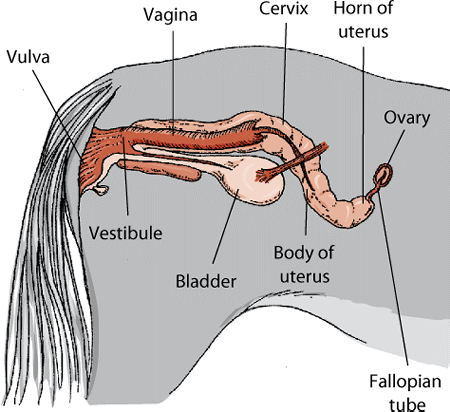
Birds
A cloaca, an aperture through which feces, sperm, and eggs flow, is present in both male and female birds. The cloacae, also referred to as the intromittent organ or phallus and related to the penis of animals, is used for intercourse by pressing its lips together.
Reptiles
Almost all reptiles conduct internal fertilization through the cloaca and are sexually dimorphic. While some reptiles are ovoviviparous and some lay eggs (animals that deliver live young). Reptiles’ cloacas contain their reproductive organs.
Amphibians
Although certain amphibians, like caecilians, have internal fertilization, the majority of amphibians fertilize their eggs externally, usually while they are in the water. Each has two pairs of internal gonads that are linked to the cloaca via ducts.
Fish
Fish use a variety of different reproductive techniques. Nonetheless, the majority of fish exhibit external fertilization and are oviparous. A male or multiple males discharge “milt,” a white fluid containing much sperm, over the unfertilized eggs during this procedure, and females utilize their cloaca to release enormous numbers of their gametes, known as spawn, into the water.
Invertebrates
The one thing that all invertebrates have in common, other than the fact that they all lay eggs, is their extraordinarily different array of reproductive systems. Almost all other invertebrates, except cephalopods and arthropods, are hermaphrodites and practice external fertilization.
Cephalopods
All cephalopods have sexual dimorphism and lay eggs to reproduce. To fertilize the ova present in the female’s single ovary, the male puts his gametes within the female’s mantle cavity or pallial cavity in the majority of cephalopods. Similarly to this, male cephalopods only have one testicle.
Insects
The majority of insects breed oviparously, or by depositing eggs. In a pair of ovaries, the female produces the eggs. During mating, the man transmits sperm from one or, more frequently, both of his testicles to the female through his external genitalia.
Arachnids
Arachnids’ gonads, which are found in the abdomen, can have one or two. The bottom of the second abdominal segment is often where the genital entrance is found. In the majority of species, the male presents a spermatophore, or package, to the female. To make sure that the sperm gets to the female safely, several arachnids have developed elaborate courtship rituals.
Plants
Flowers, the reproductive structures of angiosperms, are the most physically diverse living things, and they exhibit a comparably wide range of reproductive strategies. Mosses, liverworts, hornworts, ferns, and gymnosperms (like conifers) are examples of non-flowering plants that exhibit intricate interactions between morphological adaptation and environmental conditions in sexual reproduction.
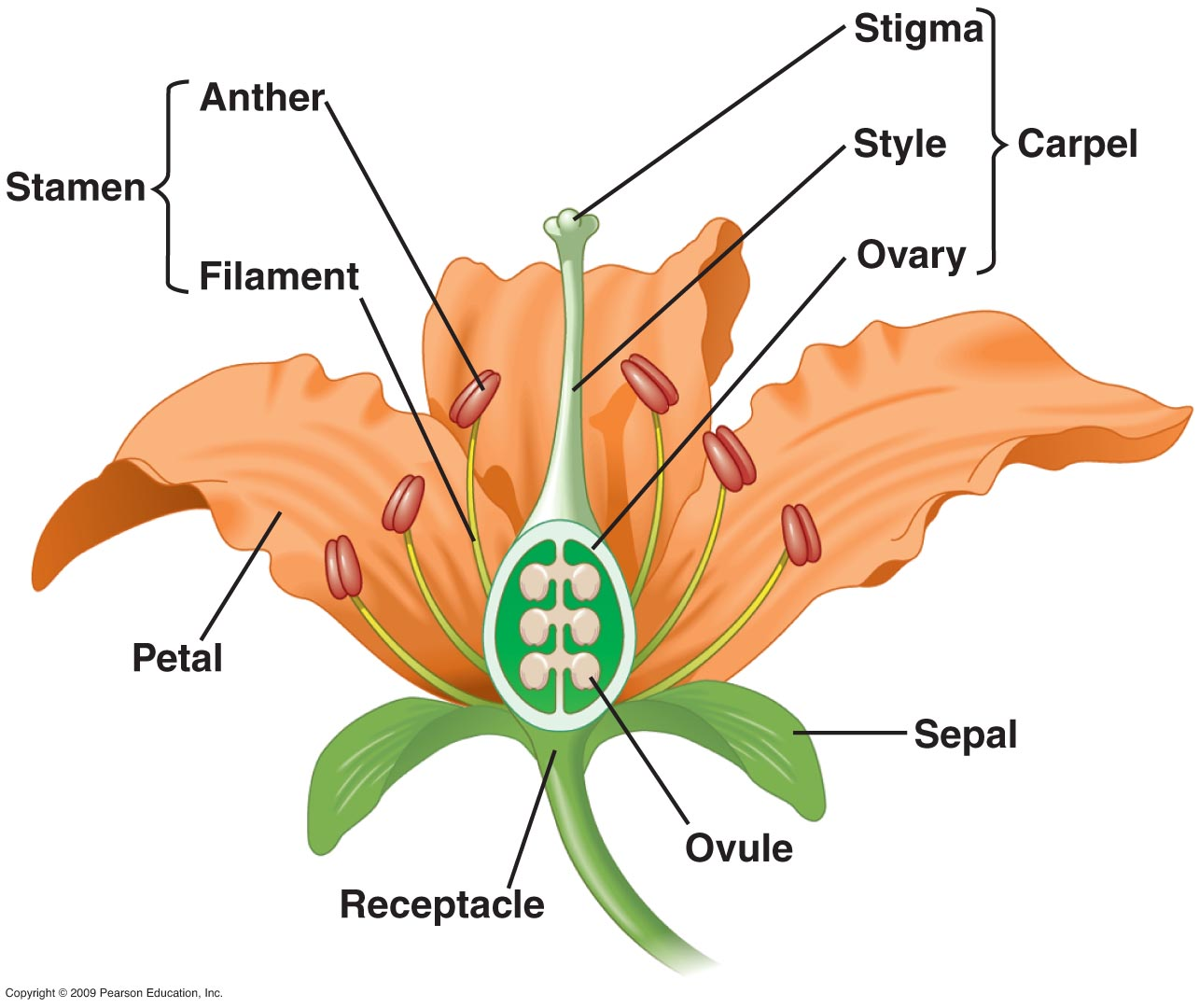
Fungi
The complexity of fungi’s reproduction reflects the variety of lifestyles and genetic makeup found in this vast kingdom of living things. According to estimates, a third of all fungi use more than one type of reproduction. For instance, reproduction may take place during two clearly distinct stages of a species’ life cycle — the teleomorph and the anamorph.
Take the Reproductive System – Biology Quiz!
Further Reading
- Human Reproduction – Biology Online Tutorial
- Sex Reversal – When Males Grew Ovaries Instead of Testes
References
- animalcareplc2012. (07:01:33 UTC). Reproductive system. https://www.slideshare.net/animalcareplc2012/reproductive-system-15245826
- Australia, H. (2023, February 23). Follicle-stimulating hormone [Text/html]. Healthdirect Australia. https://www.healthdirect.gov.au/follicle-stimulating-hormone
- Barrett, S. C. H. (2002). The evolution of plant sexual diversity. Nature Reviews. Genetics, 3(4), 274–284. https://doi.org/10.1038/nrg776
- CDC NPIN – STDs—Today. (2014, October 25). https://web.archive.org/web/20141025182016/http://www.cdcnpin.org/scripts/std/std.asp#2
- CrashCourse (Director). (2015, October 26). Reproductive System, Part 1 – Female Reproductive System: Crash Course Anatomy & Physiology #40. https://www.youtube.com/watch?v=RFDatCchpus
- Estrogen’s Effects on the Female Body. (2022, November 1). https://www.hopkinsmedicine.org/health/conditions-and-diseases/estrogens-effects-on-the-female-body
- Human reproductive system | Definition, Diagram & Facts | Britannica. (n.d.). Retrieved April 1, 2023, from https://www.britannica.com/science/human-reproductive-system
- Information on Fish Reproduction. (n.d.). Retrieved April 1, 2023, from http://www.lookd.com/fish/reproduction.html
- Nedresky, D., & Singh, G. (2023). Physiology, Luteinizing Hormone. In StatPearls. StatPearls Publishing. http://www.ncbi.nlm.nih.gov/books/NBK539692/
- Periods and fertility in the menstrual cycle. (2018, April 9). Nhs.Uk. https://www.nhs.uk/conditions/periods/fertility-in-the-menstrual-cycle/
- Reproductive system—Better Health Channel. (n.d.). Retrieved April 1, 2023, from https://www.betterhealth.vic.gov.au/health/conditionsandtreatments/reproductive-system
- Seminiferous Tubule—An overview | ScienceDirect Topics. (n.d.). Retrieved April 1, 2023, from https://www.sciencedirect.com/topics/neuroscience/seminiferous-tubule
- Reproductive system. Department of Health & Human Services. (n.d.). Retrieved April 1, 2023, from http://www.betterhealth.vic.gov.au/health/conditionsandtreatments/reproductive-system
- Tyndale-Biscoe, C. E., Tyndale-Biscoe, H., & Renfree, M. (1987). Reproductive Physiology of Marsupials. Cambridge University Press.
- Werdelin, L., & Nilsonne, A. (1999). The evolution of the scrotum and testicular descent in mammals: A phylogenetic view. Journal of Theoretical Biology, 196(1), 61–72. https://doi.org/10.1006/jtbi.1998.0821
- What organ in angiosperms is responsible for the reproductive function of the plant? | Socratic. (n.d.). Socratic.Org. Retrieved April 1, 2023, from https://socratic.org/questions/what-organ-in-angiosperms-is-responsible-for-the-reproductive-function-of-the-pl
©BiologyOnline.com. Content provided and moderated by Biology Online Editors.







